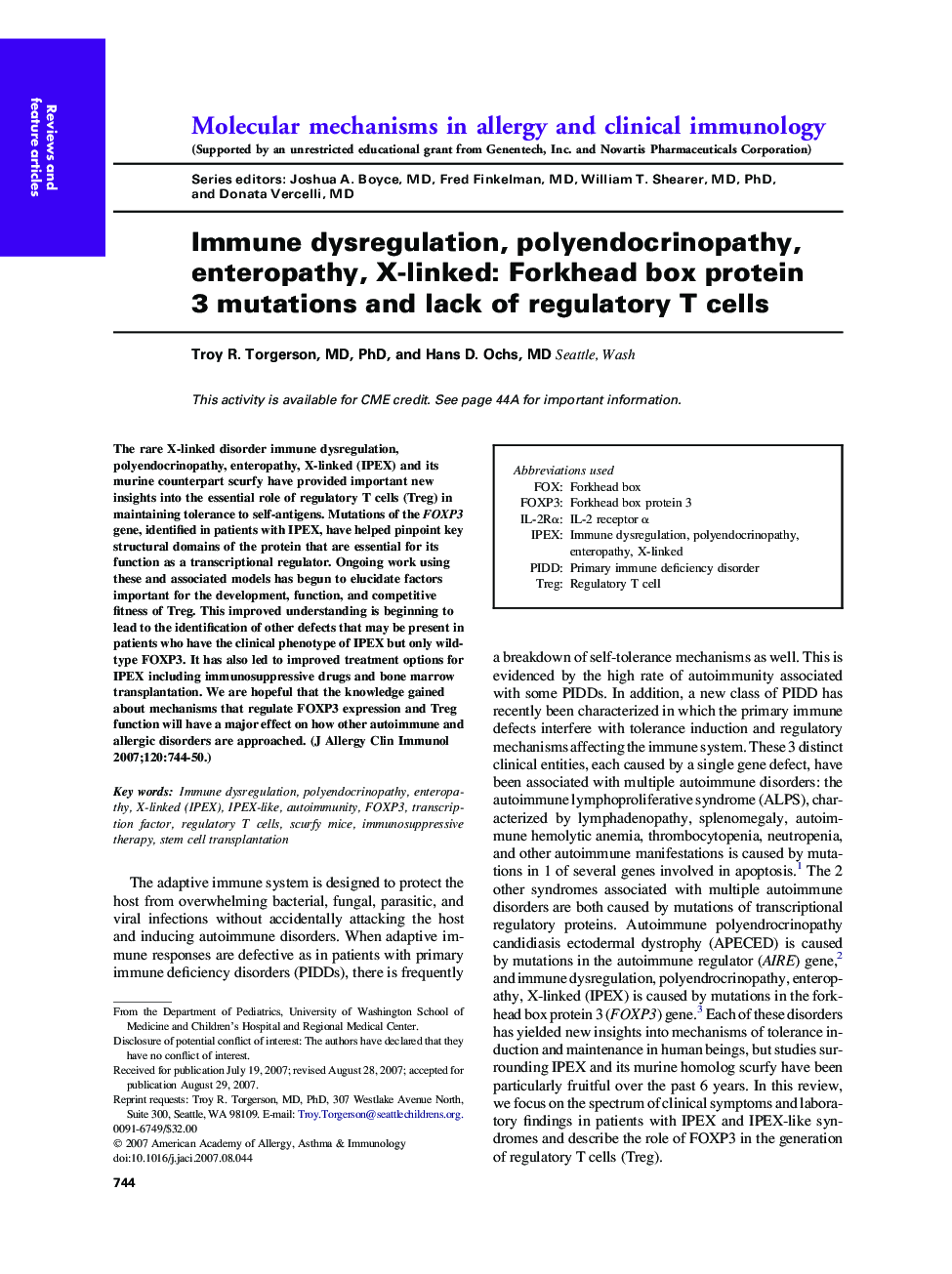| Article ID | Journal | Published Year | Pages | File Type |
|---|---|---|---|---|
| 3203182 | Journal of Allergy and Clinical Immunology | 2007 | 7 Pages |
The rare X-linked disorder immune dysregulation, polyendocrinopathy, enteropathy, X-linked (IPEX) and its murine counterpart scurfy have provided important new insights into the essential role of regulatory T cells (Treg) in maintaining tolerance to self-antigens. Mutations of the FOXP3 gene, identified in patients with IPEX, have helped pinpoint key structural domains of the protein that are essential for its function as a transcriptional regulator. Ongoing work using these and associated models has begun to elucidate factors important for the development, function, and competitive fitness of Treg. This improved understanding is beginning to lead to the identification of other defects that may be present in patients who have the clinical phenotype of IPEX but only wild-type FOXP3. It has also led to improved treatment options for IPEX including immunosuppressive drugs and bone marrow transplantation. We are hopeful that the knowledge gained about mechanisms that regulate FOXP3 expression and Treg function will have a major effect on how other autoimmune and allergic disorders are approached.
